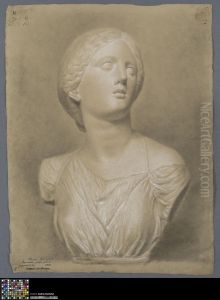Theodore-Joseph Canneel Paintings
Theodore-Joseph Canneel, born in 1817 in Oudenaarde, Belgium, was a 19th-century Belgian painter known for his historical and genre paintings. During his lifetime, he was recognized for his artistic talent and his ability to capture the spirit of the past through his work. Canneel's interest in art began at an early age, and he was encouraged to pursue his passion by his family and mentors.
Canneel studied at the Royal Academy of Fine Arts in Ghent, where he honed his skills in painting and drawing. His early work often reflected the influence of his teachers and the classical style of the academy, but as he matured as an artist, he developed his own distinctive approach. He became particularly interested in the depiction of historical subjects, drawing inspiration from Belgium's rich past and European history more generally.
In the middle of the 19th century, Canneel traveled to Italy, which was a common practice among artists of his time. The exposure to Italian art and the Renaissance masters had a profound impact on his work. His paintings from this period show an increased attention to detail, a heightened sense of drama, and a refined use of color.
Upon returning to Belgium, Canneel continued to work and exhibit his paintings. He received commissions for various important works, including pieces for public and religious buildings. His genre scenes, which often depicted everyday life in historical settings, were particularly popular among the Belgian middle class. Canneel's ability to evoke a sense of nostalgia while maintaining a high level of technical proficiency made his paintings sought after by collectors and art enthusiasts.
Despite his success, Canneel is not as well-known today as some of his contemporaries. Nevertheless, he made a significant contribution to Belgian art, particularly in the realm of historical painting. His work is characterized by its narrative quality and its faithful representation of historical costumes and settings.
Theodore-Joseph Canneel passed away in 1892, leaving behind a body of work that continues to be appreciated by art historians and collectors for its beauty and historical value. His paintings are part of the collections of several museums in Belgium and serve as a testament to the skill and dedication of an artist who was deeply committed to his craft.



